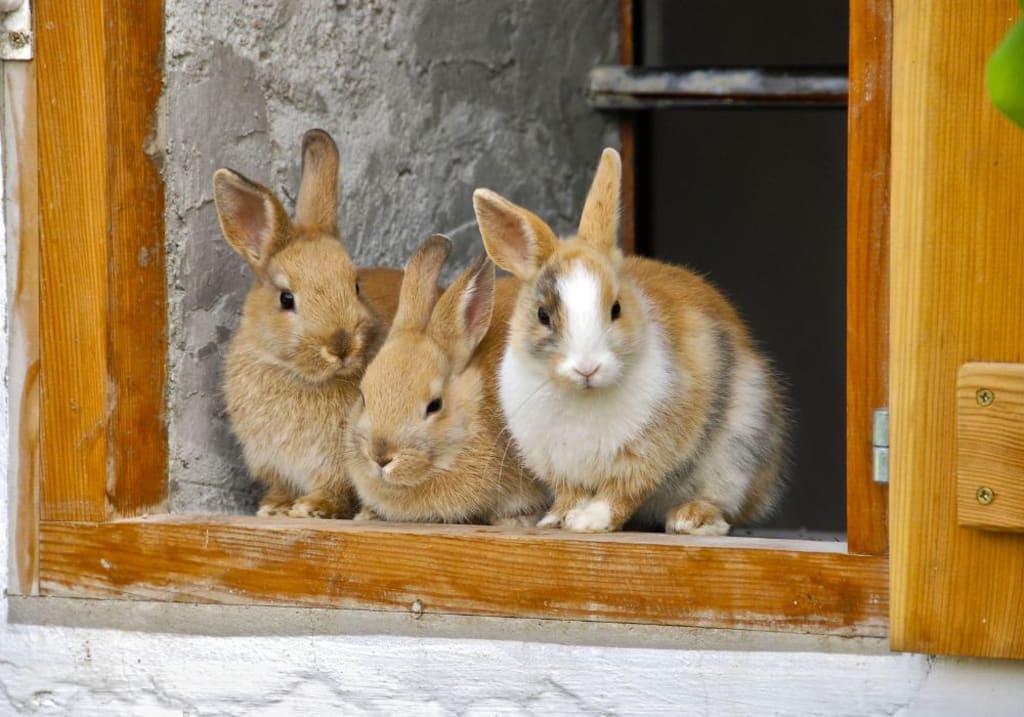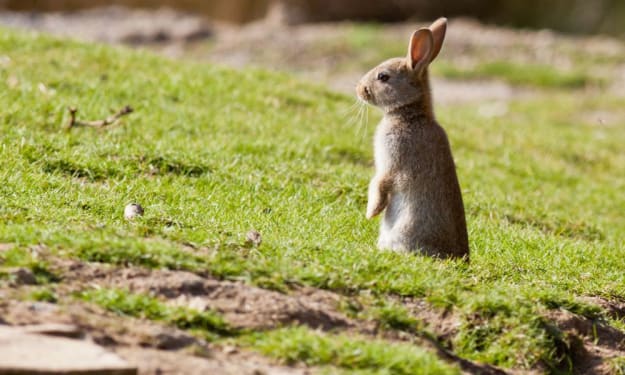Rabbit Grooming Essentials
Tools and Techniques for a Happy, Healthy Bunny

Rabbits are naturally clean animals that spend a significant portion of their day grooming themselves. However, as a responsible rabbit owner, it's important to regularly groom your pet to remove excess fur, prevent matting and hairballs, and keep them looking and feeling their best. In this comprehensive guide, we'll cover the essential tools and techniques you need for effective rabbit grooming.
Why Regular Grooming is Important for Rabbits
Rabbits are fastidious groomers, licking their fur like cats to keep themselves clean and tidy. However, they can still benefit from regular grooming by their owners for several reasons:
- Removing excess fur: Rabbits shed their coats seasonally, and long-haired breeds shed more frequently. Brushing helps remove loose hair before it can mat or be ingested, causing hairballs.
- Preventing skin problems: Matted fur can lead to skin irritation, inflammation, and even sores. Regular grooming keeps the skin healthy and free of debris.
- Bonding with your rabbit: Grooming sessions are a great opportunity to spend quality time with your rabbit and reinforce the bond between you. Rabbits that are regularly handled and groomed tend to be calmer and more comfortable with human interaction.
- Checking for health issues: Grooming allows you to regularly inspect your rabbit's skin, eyes, ears, and nails for any signs of injury, infection, or parasites. Early detection of problems can lead to faster treatment and better outcomes.
How Often Should You Groom Your Rabbit?
The frequency of grooming depends on your rabbit's coat type and shedding patterns:
- Short-haired breeds: Brush 1-2 times per week to remove excess fur and prevent matting.
- Long-haired breeds: Brush daily or every other day to keep the coat free of tangles and debris.
- Shedding seasons: Rabbits typically have two major shedding periods per year, in spring and fall. During these times, brush your rabbit daily to keep up with the increased fur loss.
- Elderly or disabled rabbits: These rabbits may have difficulty grooming themselves and may need more frequent brushing to prevent matting and soiling.
It's important to note that rabbits should never be bathed, as this can be extremely stressful for them and lead to health issues like hypothermia. Instead, spot clean your rabbit with a damp cloth if necessary.
Essential Rabbit Grooming Tools
To effectively groom your rabbit, you'll need a few key tools:
Brushes:
- Soft-bristle brush: Gently removes loose fur without irritating the skin.
- Slicker brush (pin brush): Has closely-spaced metal bristles that penetrate the coat to remove excess fur.
- Furminator: A de-shedding tool that removes undercoat fur without damaging the topcoat.
Combs:
- Fine-toothed comb: Helps detangle mats and check for parasites like fleas.
- Mat rake: Removes stubborn mats and tangles without pulling on the skin.
- Nail clippers: Specially designed for small animals, these clippers help keep nails trimmed to prevent catching and splitting.
- Styptic powder: In case you accidentally cut the quick (blood vessel) while trimming nails, styptic powder helps stop the bleeding.
- Cotton balls and swabs: Used for cleaning ears and applying medication if needed.
- Towel and washcloth: A towel protects your lap from fur, and a damp washcloth can be used for spot cleaning.
Step-by-Step Rabbit Grooming Techniques
Now that you have the right tools, let's go through the steps for effectively grooming your rabbit:
- Prepare the grooming area: Cover a table or your lap with a towel to keep fur contained. Have all your tools within reach.
- Brush the coat: Start with a soft-bristle brush to remove any loose fur on the surface of the coat. Work in sections, brushing gently in the direction of hair growth. Use a slicker brush or Furminator to remove excess undercoat fur, being careful not to brush too vigorously.
- Check for mats and tangles: Run your fingers through your rabbit's coat to detect any matted areas. Use a fine-toothed comb or mat rake to gently detangle the mats, working from the ends of the hair toward the skin.
- Trim mats if necessary: If a mat is too stubborn to detangle, you may need to carefully trim it out with scissors. Lift the mat away from the skin and snip small sections at a time to avoid cutting the skin.
- Clean the ears: Gently wipe the outer ear with a damp cotton ball to remove any dirt or wax buildup. Never insert anything into the ear canal, as this can cause injury.
- Trim nails: Use small animal nail clippers to trim your rabbit's nails every 4-6 weeks. Avoid cutting the quick (blood vessel) by only trimming the clear portion of the nail. Have styptic powder on hand in case of bleeding.
- Clean the anal area: Gently wipe the area around the anus with a damp cloth to remove any fecal matter or urine stains. If the anal glands are impacted, consult your veterinarian for proper treatment.
- Reward your rabbit: Finish the grooming session with a treat and plenty of praise to reinforce the positive experience. Regular grooming sessions will help your rabbit become more comfortable with the process over time.
Tips for Grooming Difficult Rabbits
Some rabbits may be more resistant to grooming than others. Here are some tips to make the process easier:
- Start young: Introduce grooming to your rabbit at a young age so they become accustomed to the process. Reward them with treats and praise during each session.
- Keep sessions short: Limit grooming sessions to 10-15 minutes at a time to avoid stressing your rabbit. You can always do multiple sessions per day if needed.
- Use calming techniques: Gently wrap your rabbit in a towel to restrict movement and prevent scratching during nail trims or mat removal.
- Seek professional help: If your rabbit becomes extremely stressed or aggressive during grooming, consult with a veterinarian or professional rabbit groomer for advice or assistance.
Common Grooming Problems and Solutions
Even with regular grooming, rabbits can still develop issues like matting, hairballs, and overgrown nails. Here's how to address some common problems:
- Matting: Mats can form in long-haired breeds or if grooming is neglected. Gently brush out small mats with a slicker brush or comb. For larger mats, carefully trim them out with scissors, lifting the mat away from the skin to avoid cutting the skin.
- Hairballs: Rabbits can't vomit like cats, so ingested fur can build up in the digestive tract and cause blockages. Brush your rabbit regularly to remove excess fur before it can be swallowed. You can also offer hairball remedies or laxatives to help move fur through the digestive system.
- Overgrown nails: Long nails can split or catch on surfaces, causing pain and injury. Trim your rabbit's nails every 4-6 weeks using small animal nail clippers. Avoid cutting the quick (blood vessel) by only trimming the clear portion of the nail.
- Skin irritation: Matted fur, urine scald, or parasites can cause skin irritation and inflammation. Brush your rabbit regularly, keep their living space clean and dry, and watch for signs of fleas, mites, or other parasites.
Grooming Tips for Specific Coat Types
Different rabbit breeds have varying coat types that require specific grooming techniques:
- Short-haired breeds (e.g., Dutch, Rex): Brush 1-2 times per week with a soft-bristle brush to remove excess fur and prevent matting.
- Long-haired breeds (e.g., Angora, Himalayan): Brush daily or every other day with a slicker brush or Furminator to prevent tangles and matting. Trim mats if necessary.
- Wool breeds (e.g., Angora): Wool-type coats require more frequent grooming, as they are prone to felting and matting. Brush daily and consider having your rabbit clipped by a professional groomer.
- Dwarf breeds (e.g., Dwarf Hotot, Mini Rex): These small rabbits have delicate skin and may require gentler brushing techniques. Use a soft-bristle brush and avoid excessive brushing.
Grooming Supplies and Accessories
In addition to the essential grooming tools, there are several accessories that can make the process easier and more comfortable for both you and your rabbit:
- Grooming table or box: A raised surface with a non-slip surface makes it easier to groom your rabbit without straining your back.
- Grooming arm: Attaches to the side of a table and holds your rabbit in place during grooming sessions.
- Grooming bag or harness: Helps restrain your rabbit during nail trims or mat removal. Look for one with a built-in harness to prevent escape.
- Grooming treats: Offer your rabbit a favorite treat during and after grooming sessions to reinforce the positive experience.
- Grooming apron or smock: Protects your clothing from fur and keeps your hands free during grooming.
Conclusion
Regular grooming is an essential part of rabbit care that helps keep your pet healthy, comfortable, and looking their best. By investing in the right tools and techniques, you can make grooming a positive experience for both you and your rabbit. Remember to be gentle, patient, and reward your rabbit with treats and praise after each session. With proper grooming, you'll enjoy a happier, healthier bunny for years to come.
About the Creator
Hasan
Welcome...
In this site of mine you can learn amazing things and many information that you don't know so please subscribe to my site.
Enjoyed the story? Support the Creator.
Subscribe for free to receive all their stories in your feed. You could also pledge your support or give them a one-off tip, letting them know you appreciate their work.






Comments
There are no comments for this story
Be the first to respond and start the conversation.